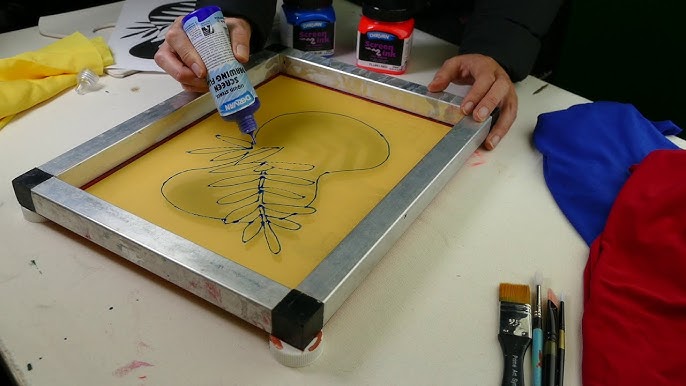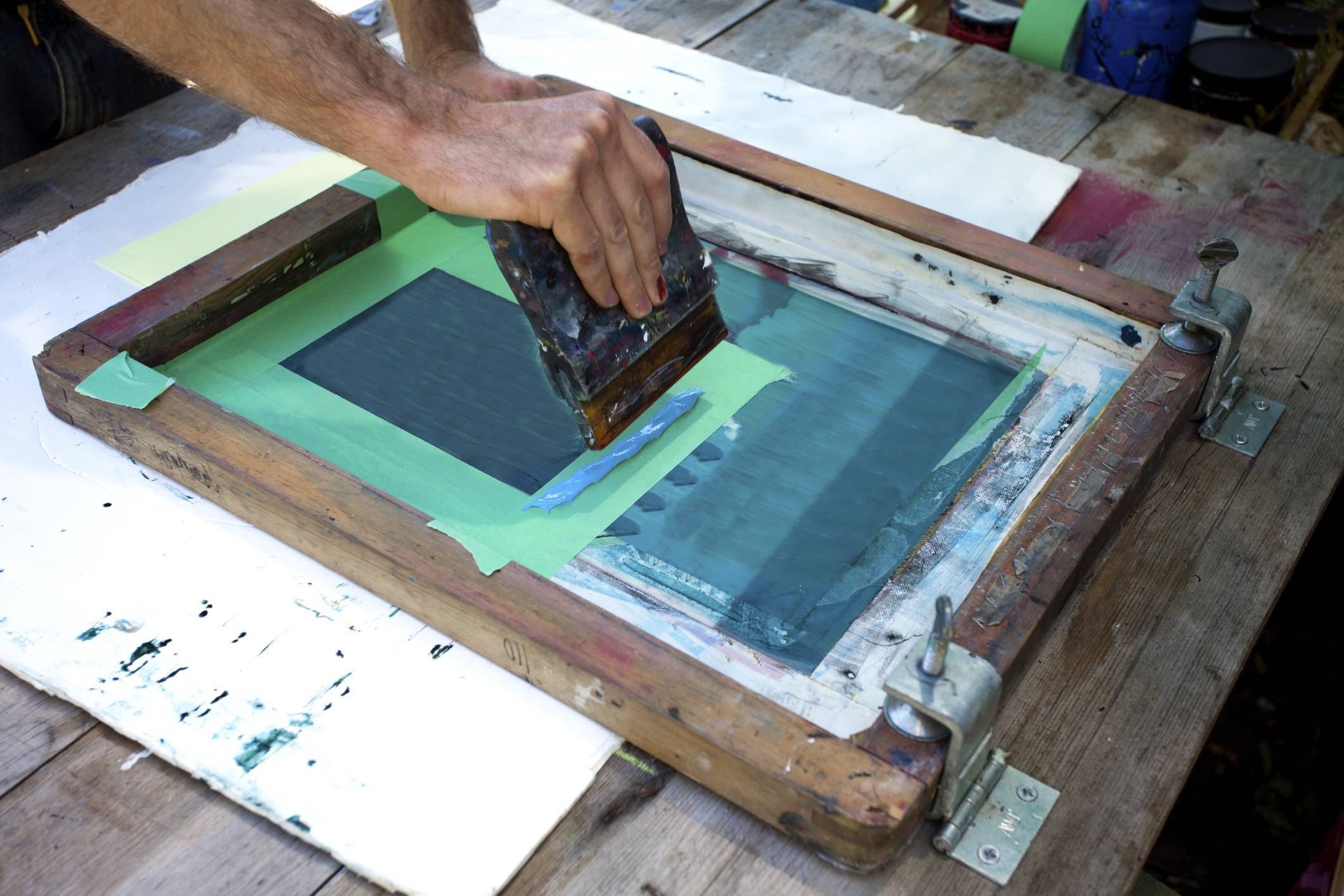Discover the Different Sorts Of Screen Printing Techniques for Your Next Job
Screen printing offers a diverse array of strategies that can boost any imaginative project. From conventional methods like serigraphy to contemporary innovations such as direct-to-garment printing, each strategy has its distinct advantages. Specialized choices, including metallic and environment-friendly inks, present a lot more opportunities. Comprehending these strategies can greatly impact the final result. The difficulty lies in picking the most ideal technique for certain demands and preferred impacts. What variables should one think about?

The Essentials of Screen Printing
Although screen printing might seem complicated, it is basically a straightforward process that entails moving ink via a mesh screen onto different surfaces. The technique starts with the creation of a pattern, which specifies the style to be printed. This stencil is affixed to a mesh screen, generally constructed from polyester or nylon. When the stencil is in area, ink is put on the screen and pressed via the mesh utilizing a squeegee, leading to the preferred pattern being published on the underlying material.
Screen printing can be executed on a vast array of substratums, including paper, plastic, and textile, making it a versatile selection for numerous jobs. The procedure permits for detailed designs and lively shades, making it popular in sectors such as advertising, art, and fashion. Understanding these essentials equips people with the fundamental understanding required to explore more advanced methods in screen printing.
Conventional Screen Printing Techniques
Traditional screen printing strategies have been utilized for centuries, preserving the craftsmanship and virtuosity of this approach. This technique utilizes a mesh screen to transfer ink onto a substrate, such as textile or paper, permitting vibrant and lasting designs. The process begins with creating a stencil, which obstructs particular locations of the screen to regulate where the ink will be applied.
One preferred technique is serigraphy, commonly used for limited versions and creative prints. An additional is the usage of water-based inks, which are environment-friendly and provide a soft feeling on fabrics - 10:9 Design near me. In addition, standard techniques can include hand-operated printing, where craftsmens use ink with a squeegee, ensuring precision and focus to information
These strategies continue to be valued in the sector for their responsive quality and the distinct appearances they create, appealing to both designers and consumers who value the heritage of screen printing.
Digital Screen Printing Innovations
As the demand for faster production and personalization in the printing sector has risen, electronic screen printing technologies have emerged as a game-changer. This technology mixes standard screen printing approaches with electronic processes, enabling quick prototyping and complex designs that were previously hard to achieve. One significant improvement is the intro of direct-to-garment (DTG) printing, which promotes top notch, full-color prints on different textiles without the requirement for screens. In addition, improvements in ink solutions have actually brought about eco-friendly options that maintain vibrant colors while reducing environmental effect. Making use of automated systems further streamlines manufacturing, decreasing labor prices and enhancing precision. These innovations not only accommodate little set orders and customized layouts yet also enable for quicker turnaround times, making them optimal for businesses concentrated on meeting consumer demands in a hectic market. Digital screen printing, consequently, stands for an essential advancement in the domain name of printing strategies.
Specialty Screen Printing Methods
Checking out specialized screen printing approaches exposes a varied range of methods that push the boundaries of creative thinking and functionality in the printing market. Amongst these, glow-in-the-dark inks supply a distinct aesthetic effect, making layouts come active in low-light problems. Metallic inks, recognized for their sparkling finish, include a touch of deluxe to printed materials. Another cutting-edge method is discharge printing, which eliminates color from the material as opposed to adding ink, resulting in a soft, classic feeling. High-density printing develops a raised texture on the surface area, enhancing tactile engagement. Furthermore, water-based inks are getting popularity for their lively colors and lowered ecological effect. Each of these specialized methods accommodates details design requirements, enabling artists and brands to produce standout products that resonate with their target markets. By leveraging these techniques, services can elevate their screen printing jobs to new heights, making certain unforgettable impacts.
Eco-Friendly Screen Printing Options
Green screen printing options are acquiring traction as the sector shifts in the direction of sustainability. Sustainable ink options and using biodegradable products are crucial elements in minimizing the ecological influence of the printing process. By embracing these practices, screen printers can add to a much more lasting future while maintaining top notch outcomes.
Lasting Ink Choices

Biodegradable Products Usage
As the screen printing industry evolves, the consolidation of eco-friendly products is becoming progressively essential for eco mindful techniques. Developers and makers are now exploring inks and substratums made from all-natural, sustainable sources that break down extra effectively than traditional equivalents. These naturally degradable options minimize plastic waste and lessen ecological influence, aligning with the expanding demand for lasting items.
Usual instances include water-based inks and organic cotton fabrics, both of which lessen unsafe chemicals and promote eco-friendliness. Brand names that adopt these products typically improve their market charm, attracting customers that focus on sustainability. As awareness of ecological concerns proceeds to increase, the shift in the direction of naturally degradable materials in screen printing is likely to acquire energy, fostering a greener industry standard.
Picking the Right Technique for Your Job
Exactly how can one determine the most appropriate screen printing method for a certain job? The decision depends upon numerous elements, including the material to be printed on, the intricacy of the design, and the desired manufacturing quantity - 10:9 Design Screen Printing. For example, direct-to-garment printing is suitable for complex click here designs with numerous colors, while traditional screen printing succeeds for larger runs of simpler graphics
In addition, factor to consider of the end-use of the published product is essential. For outside applications, techniques that supply resilience and climate resistance, such as plastisol ink, might be favored. Alternatively, environmentally-conscious projects may take advantage of water-based inks or biodegradable products.
Ultimately, recognizing the project's special needs enables an informed selection, guaranteeing both visual charm and practical long life. By reviewing style intricacy, product compatibility, and manufacturing scale, one can properly pick the most proper screen printing strategy to meet their job's goals.
Regularly Asked Inquiries
What Is the History of Screen Printing?
Screen printing came from ancient China around 1000 AD, developing via Japan and Europe. By the 20th century, it became preferred in commercial art and style, revolutionizing exactly how designs were generated and distributed around the world.

How Do I Prepare Art Work for Screen Printing?
To prepare artwork for screen printing, one must ensure high resolution, use an ideal shade setting, develop separate layers for every shade, and convert text to details, assuring compatibility with the printing procedure and desired outcome.
What Materials Are Finest for Screen Printing?
The ideal materials for screen printing consist of high-grade inks, durable screens, and appropriate substrates like cotton, polyester, or blends. Additionally, utilizing appropriate solution and squeegees can boost the printing procedure and final outcomes.
Can I Screen Publish at Home?
Yes, screen printing at home is possible. With the best materials, setup, and methods, individuals can create top quality prints. Nevertheless, cautious factor to consider of work space and tools is necessary for successful outcomes.

What Are Common Mistakes in Screen Printing?
Usual mistakes in screen printing consist of incorrect direct exposure times, insufficient ink uniformity, misalignment of screens, inadequate cleansing of materials, and disregarding to check prints. These errors can compromise the top quality and precision of the end product.
Screen printing might seem facility, it is essentially a simple procedure that involves transferring ink via a mesh screen onto numerous surface areas. As the need for faster manufacturing and modification in the printing market has risen, digital screen printing advancements have emerged as a game-changer. Exploring specialized screen printing methods exposes a varied range of methods that push the borders of creativity and functionality in the printing industry. The finest products for screen printing consist of high-quality inks, durable screens, and appropriate substratums like cotton, polyester, or blends (10:9 Design near me). Usual errors in screen printing include incorrect exposure times, insufficient ink consistency, misalignment of screens, not enough cleaning of products, and neglecting to test prints